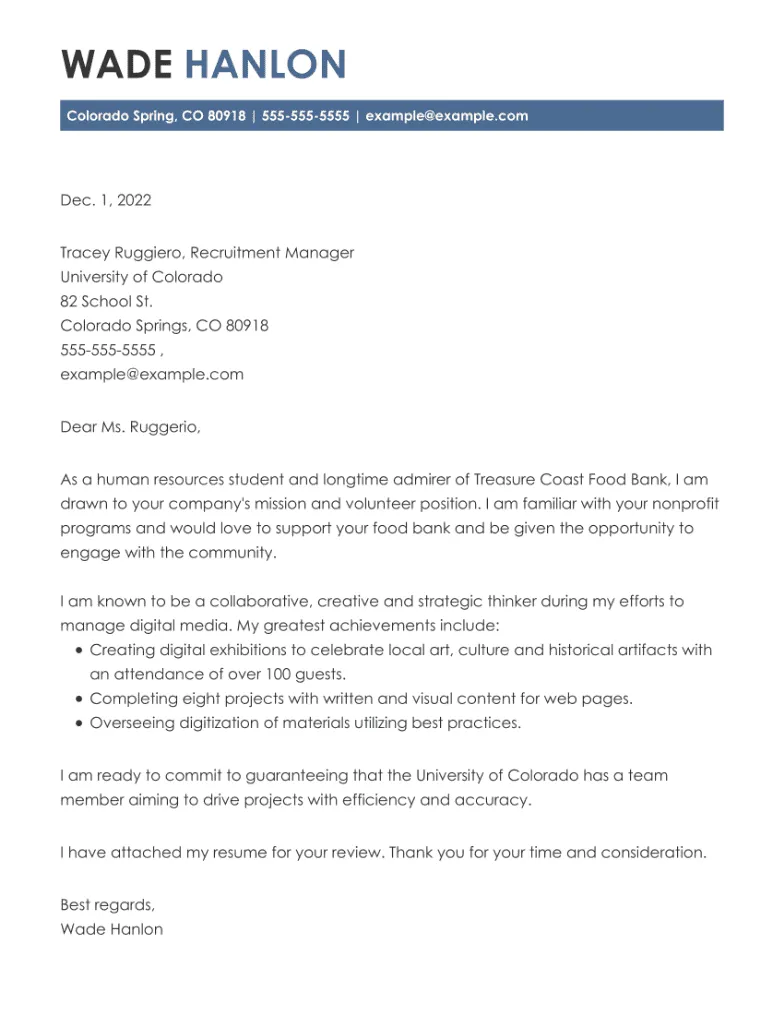Scholarship Cover Letter Tips
Crafting a compelling scholarship cover letter can significantly increase your chances of securing financial aid. Your cover letter is your first impression, and a well-written one can make you stand out from the competition. It’s not just about listing your accomplishments, but also demonstrating your personality, aspirations, and suitability for the scholarship. This guide provides essential tips to help you write a cover letter that shines and helps you ace your application. Remember, each scholarship has different criteria, so the best strategy is always to tailor each cover letter to the specific requirements.
Research the Scholarship
Before you even begin writing, thorough research is paramount. Understand the scholarship’s mission, values, and the type of student they’re looking to support. Visit the scholarship’s website, read any provided materials, and look for information about past recipients. What are the scholarship providers’ priorities? Are they focused on academic excellence, community involvement, financial need, or a specific field of study? Understanding these aspects will guide you in highlighting the most relevant information in your letter.
Understand the Scholarship’s Requirements
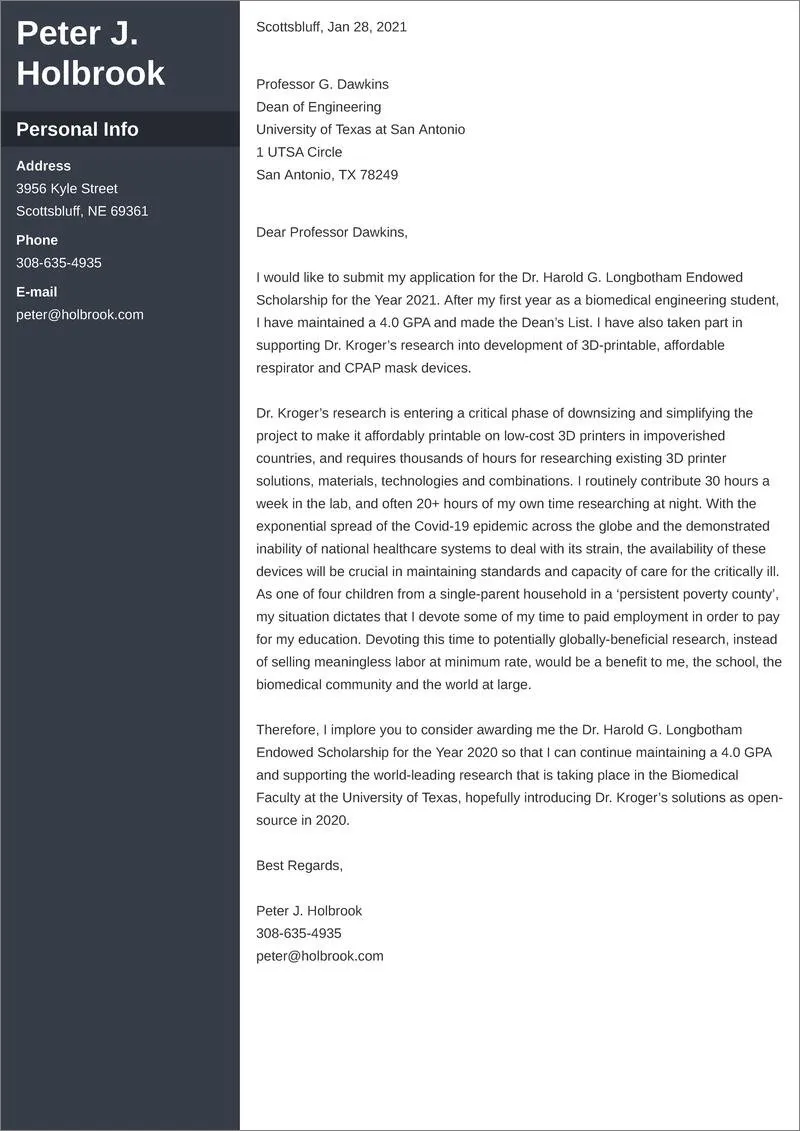
Carefully read and understand all instructions and guidelines provided by the scholarship committee. Some scholarships may have specific word limits, formatting requirements, or required topics to address. Failing to follow these instructions can lead to immediate disqualification. Ensure you know what the scholarship committee is looking for, and address each point directly in your cover letter to show you are a good fit.
Tailor Your Letter
Personalize your cover letter for each scholarship application. Generic, one-size-fits-all letters are easily spotted and often discarded. Instead, take the time to tailor your letter to the specific scholarship’s focus. Mention the scholarship by name and clearly state why you believe you are a suitable candidate. Demonstrate how your values, goals, and experiences align with the scholarship’s objectives. This level of personalization shows that you’ve invested time and effort, making a stronger impression.
Highlight Your Strengths
Use your cover letter to showcase your strengths. This includes your academic achievements, leadership skills, extracurricular activities, and any relevant work experience. Provide concrete examples and evidence to support your claims. The goal is to demonstrate why you are a deserving candidate. Instead of just listing your attributes, weave them into a narrative that tells the story of who you are and what you are passionate about.
Showcase Your Academic Achievements
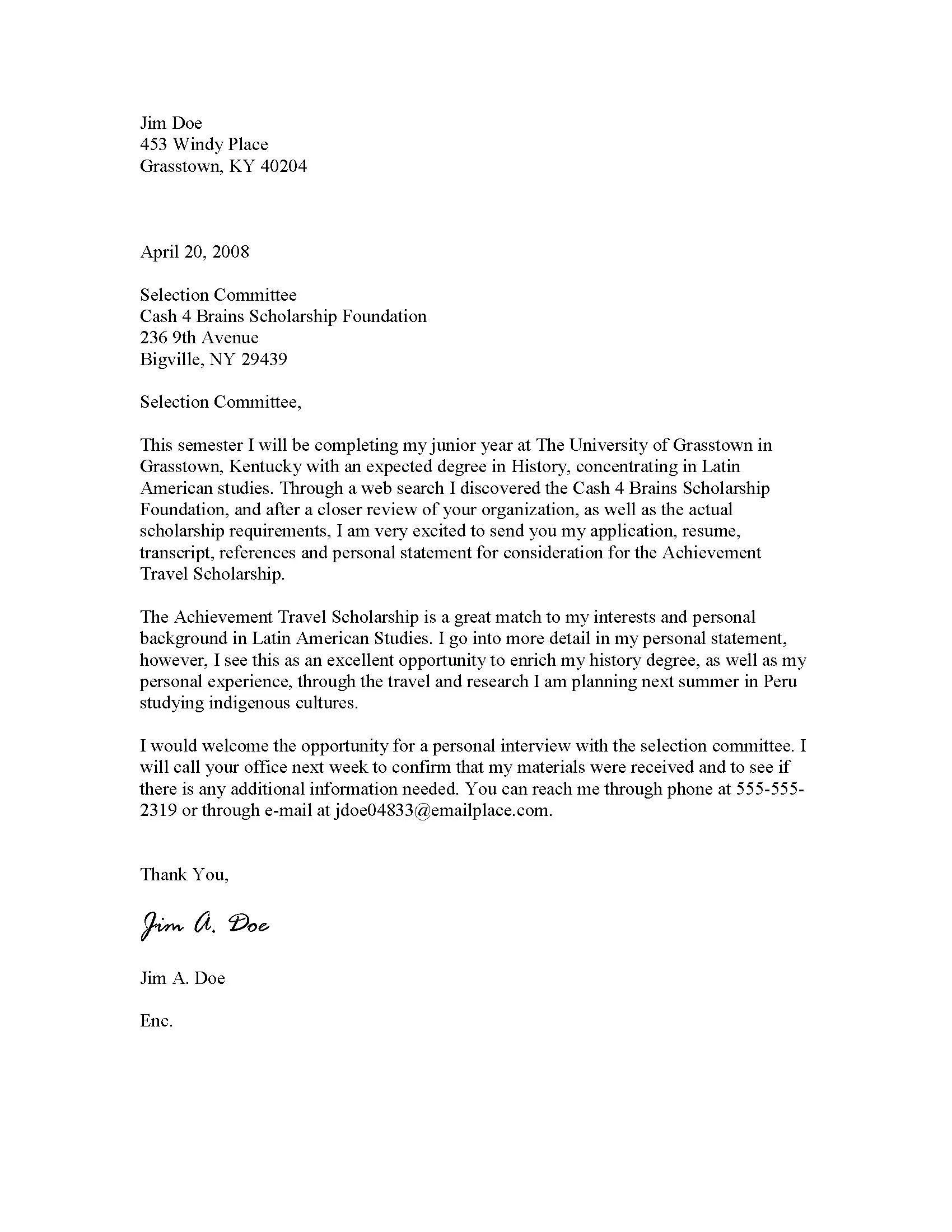
Highlight your academic successes, such as your GPA, relevant coursework, honors, and awards. If you’ve overcome academic challenges, briefly explain the situation and how you’ve grown from the experience. Be specific and provide details to back up your achievements. For instance, instead of saying ‘I excelled in science’, you might write, ‘In my advanced placement chemistry course, I earned an A and was recognized for outstanding performance on the final exam.’
Detail Extracurricular Activities and Leadership
Discuss your involvement in extracurricular activities, volunteer work, and any leadership roles you’ve held. These activities demonstrate your commitment, skills, and personality beyond academics. Describe your contributions, the impact you made, and any lessons you learned. If you’ve held leadership positions, mention the responsibilities and how you managed them. These experiences show that you are well-rounded, motivated, and possess important life skills.
Emphasize Your Goals and Aspirations
Clearly articulate your future goals and how the scholarship will help you achieve them. Be specific about your academic and career aspirations. What do you hope to accomplish in your field of study? How does the scholarship align with your long-term objectives? Sharing your dreams demonstrates your drive and vision, showing the committee how invested you are in your future. This helps them see you as a serious and deserving candidate.
Connect Your Goals to the Scholarship
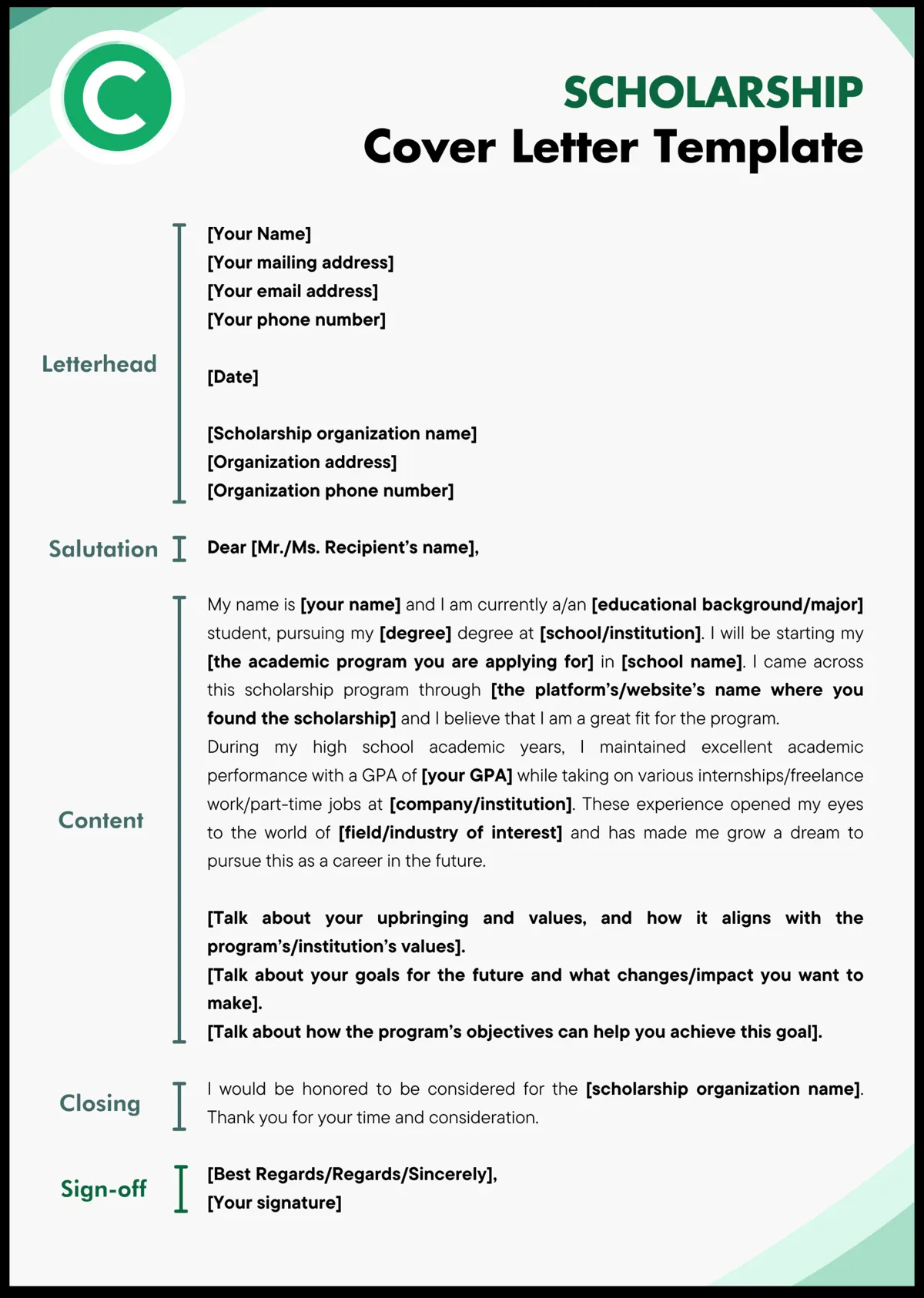
Explain how the scholarship will contribute to your educational and career aspirations. Describe how the financial assistance will enable you to pursue your studies without undue financial stress. If the scholarship is specifically for a particular field or supports certain types of activities, be sure to explain how it aligns with your goals. This shows the committee that you understand their mission and that the scholarship will be used purposefully.
Express Your Gratitude and Enthusiasm
Convey your sincere gratitude for the opportunity to apply for the scholarship. Express your enthusiasm for the scholarship’s mission and your eagerness to be considered. A genuine thank you at the end of your letter shows your appreciation and leaves a positive impression. It reinforces your interest and emphasizes your commitment to the scholarship.
Formatting and Structure
The format and structure of your cover letter are just as important as the content. A well-organized letter is easier to read and demonstrates your attention to detail. Choose a professional and easy-to-read font, such as Times New Roman or Arial, and use consistent formatting throughout. Maintain a clean layout with clear sections and adequate spacing to enhance readability and presentation.
Use a Professional Tone
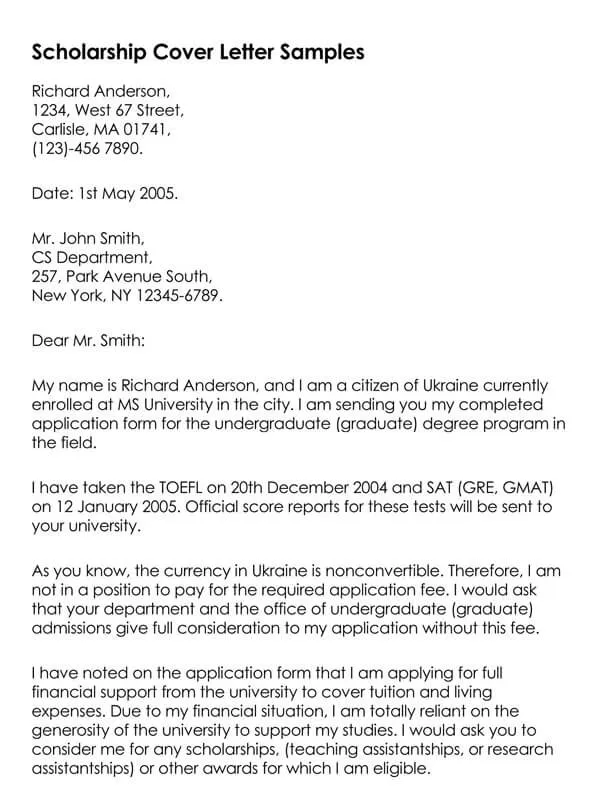
Maintain a professional and formal tone throughout your cover letter. Avoid slang, colloquialisms, or overly casual language. Use proper grammar, punctuation, and spelling. While it’s important to let your personality shine, always ensure your writing reflects maturity and respect for the scholarship committee. This demonstrates your seriousness and professionalism, making a positive impression.
Proper Salutation and Closing
Start your letter with a professional salutation, such as ‘Dear Scholarship Committee’ or ‘Dear [Name of the scholarship contact, if known]’. End your letter with a formal closing, such as ‘Sincerely’ or ‘Yours faithfully’, followed by your name and contact information. Ensure your contact details are correct and up-to-date. This shows respect and adds to the professionalism of your letter.
Keep it Concise
Keep your cover letter concise and focused. Aim for a one-page document, as scholarship committees are often reviewing numerous applications. Avoid unnecessary details and focus on the most relevant information. Every sentence should contribute to the overall message. Make every word count, ensuring your writing is clear, direct, and impactful.
Proofread and Edit
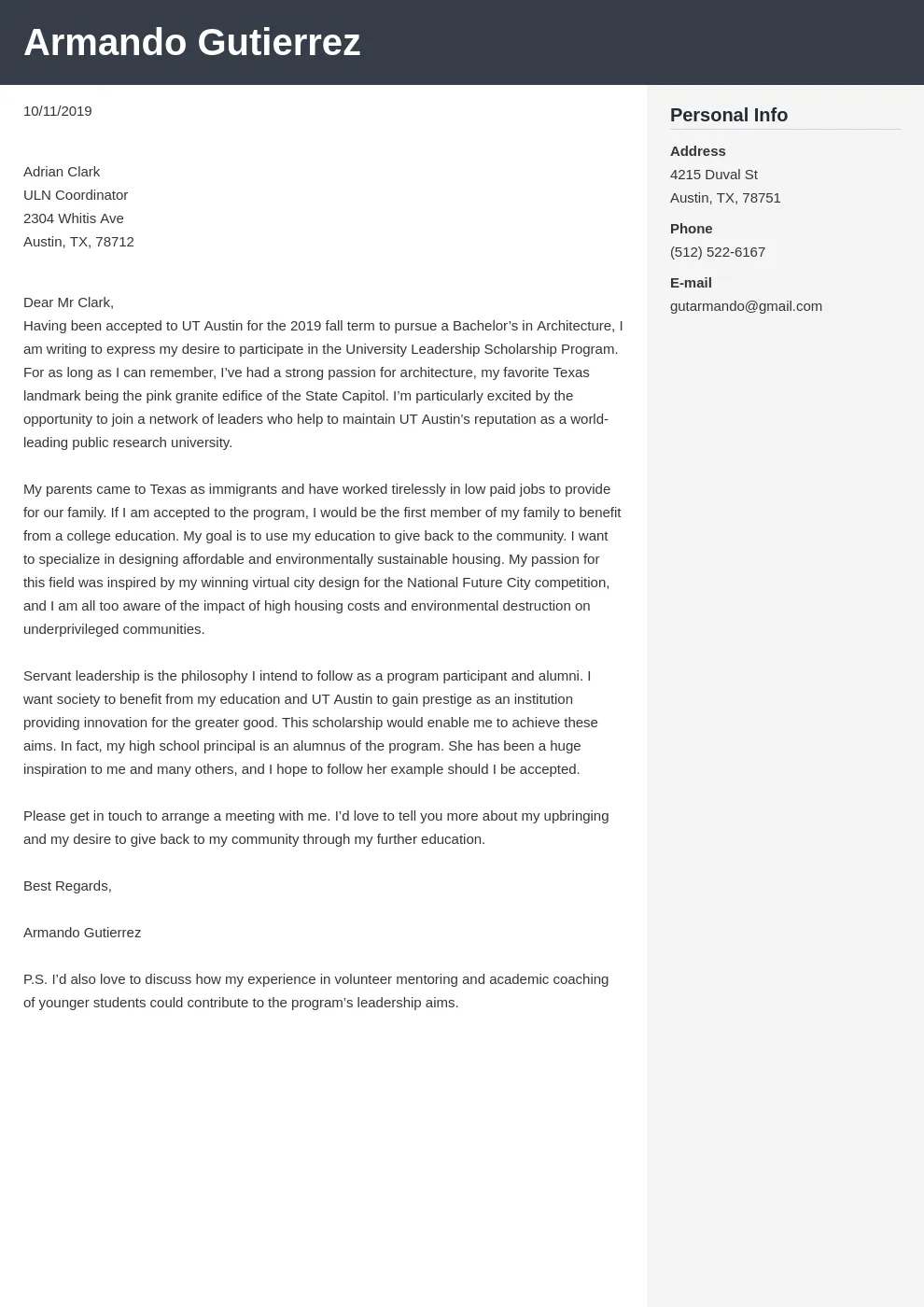
Proofreading is a critical step in ensuring your cover letter is polished and professional. Read your letter carefully to catch any grammatical errors, typos, or inconsistencies in style. Have a friend, family member, or mentor review your letter to provide an objective perspective and catch any mistakes you might have missed. A well-edited letter demonstrates your attention to detail and your commitment to excellence.
Common Mistakes to Avoid
Be mindful of common mistakes that can undermine your application. Avoid these pitfalls to ensure your cover letter presents you in the best possible light. Careful attention to detail can significantly increase your chances of success in the scholarship application process.
Generic Letters
As mentioned previously, avoid sending generic cover letters that are not tailored to the specific scholarship. Generic letters show a lack of effort and interest. Always customize your letter to reflect the specific scholarship’s goals and requirements. This shows that you have taken the time to understand the scholarship and are genuinely interested in receiving it.
Focusing Solely on Financial Need
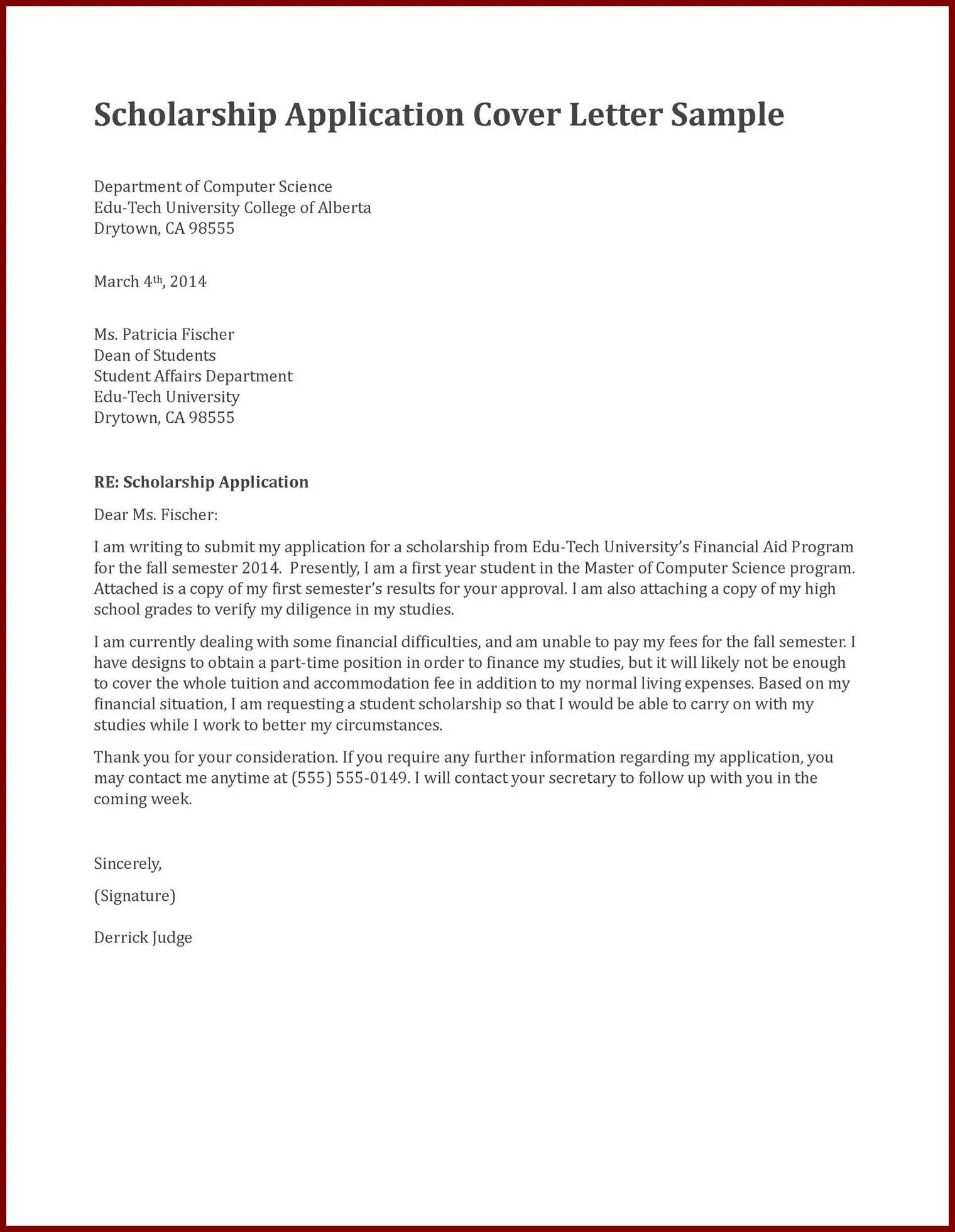
While financial need may be a factor, focusing solely on this aspect can be a mistake. Scholarship committees often look for well-rounded individuals with strong academic records, extracurricular involvement, and clearly defined goals. Don’t let your letter become a sob story. Instead, balance your discussion of financial need with your accomplishments, aspirations, and how the scholarship will help you achieve your goals. Demonstrate your potential and why you’re a worthwhile investment.
Ignoring Instructions
Failing to follow instructions is one of the most common reasons applications are rejected. Always carefully review the application guidelines and adhere to all formatting and content requirements. Pay close attention to word limits, required documents, and specific questions to answer. Ignoring the instructions shows a lack of attention to detail and a disregard for the process, which can lead to an immediate rejection.
